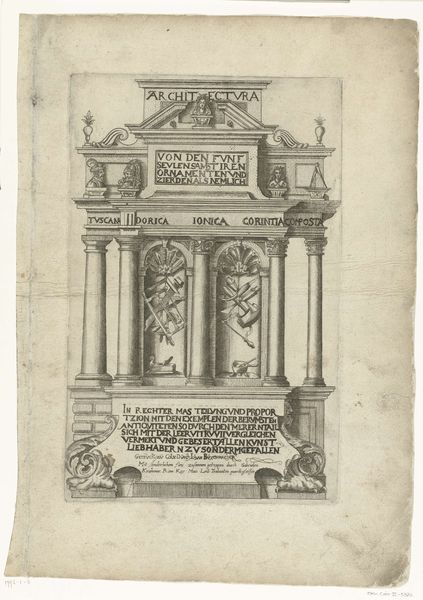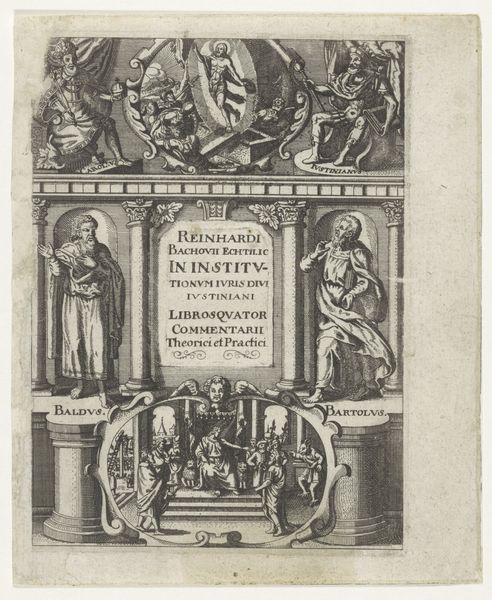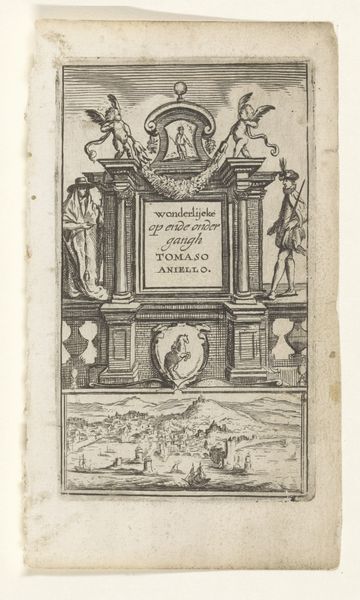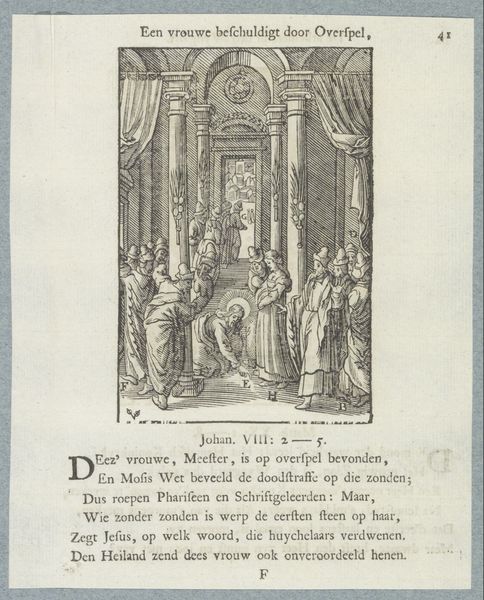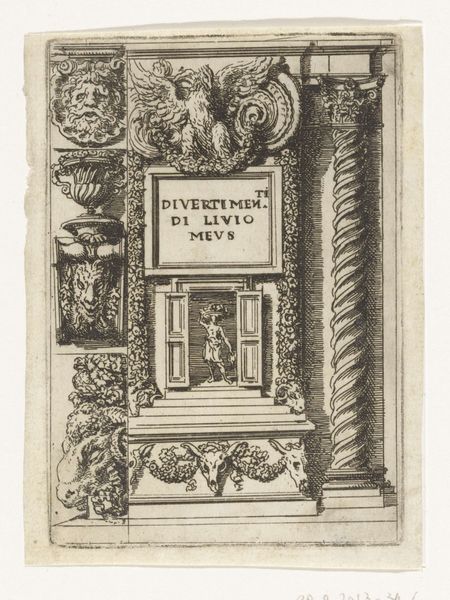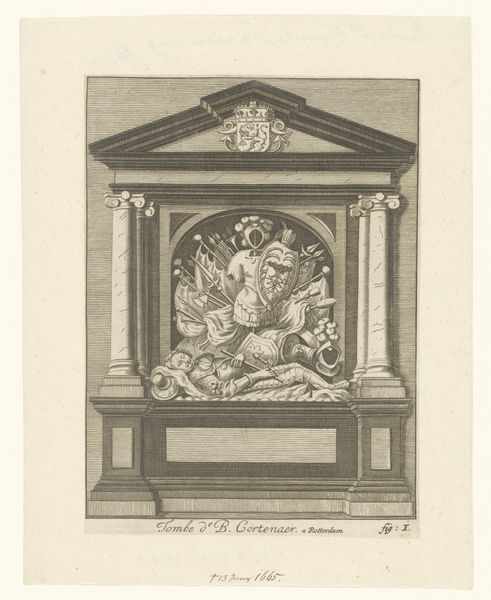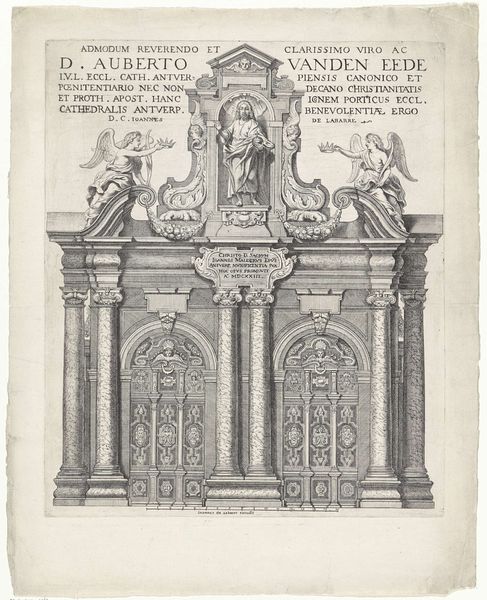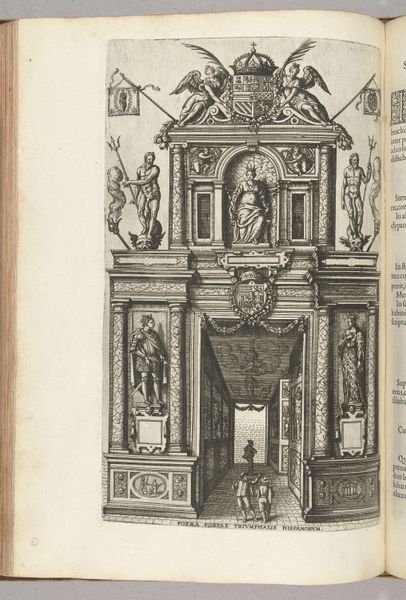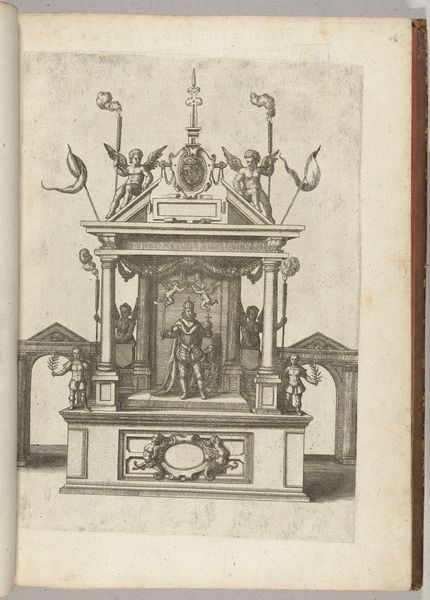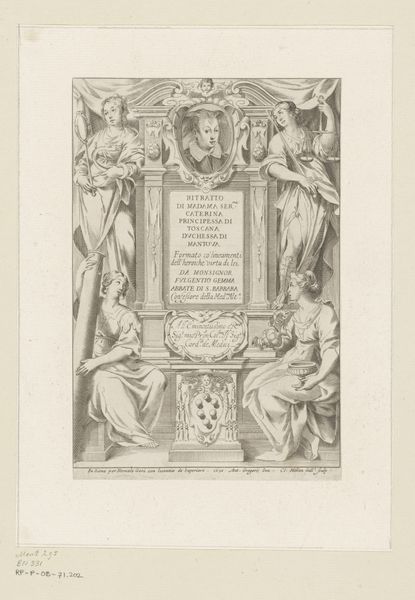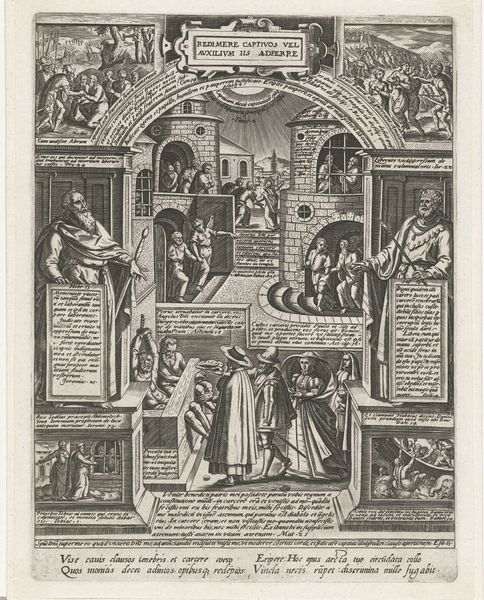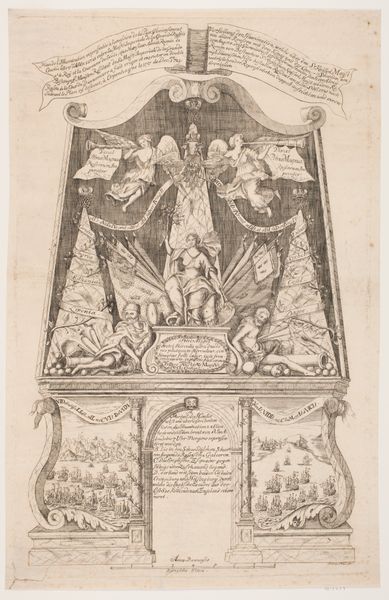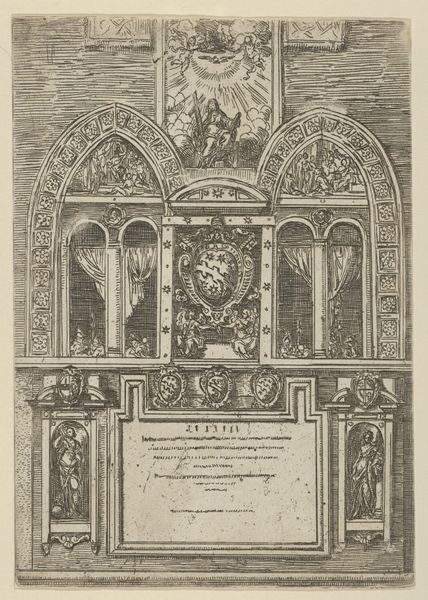
drawing, print, etching, engraving
#
drawing
#
baroque
# print
#
etching
#
figuration
#
engraving
Dimensions: height 179 mm, width 139 mm
Copyright: Rijks Museum: Open Domain
Curator: Looking at this, the stark lines and the formal pose of the figure, I immediately feel a sense of restrained dignity, almost a stoicism. It’s very architectural. Editor: That's an interesting observation. We're looking at an etching and engraving called "Nehalennia-altaar," or "Altar of Nehalennia" by Hendrick Danckerts, created around 1647. What stands out to me is the almost documentary impulse behind its creation; this is both a drawing and print, allowing the piece to spread and multiply for the artist's audiences. Curator: Yes, the architectural framing focuses attention, but I'm drawn to the way Nehalennia is seated. It is a seated position, and her gaze is directly out towards the viewer; that makes this immediately readable as an authoritative representation. Even the dog at her side contributes, representing loyalty, not an individualized pet, but symbolic representation of the divine authority. Editor: That interplay of authority is striking. You've pinpointed something crucial, the way the iconography functions to establish power and legitimacy. I think we should reflect on how the context matters, especially in the 17th century with rising tides of merchantilism. Remember, Nehalennia was the goddess particularly worshipped by merchants and seafarers, as the protective deity of the North Sea. What’s your sense of her perceived power based on symbols within this piece? Curator: I perceive it being less about worldly power and more about an underlying protection. Note the basket of what appears to be fruits by her side: she is bestowing safety to those that must go to the seas. It's as much psychological and emotional sustenance that’s being implied. This isn't about controlling the sea. Rather, she asks that voyagers remember that divine providence, symbolized with the seated, maternal pose will offer ultimate refuge and safe return. Editor: That ties in beautifully with the socio-economic functions of these altars and prints, doesn’t it? Images like these played an essential public role; giving reassurance during very turbulent, dangerous periods, especially among sea-goers facing perilous trades and travel in Northern Europe at this time. Curator: Absolutely, images were not passively consumed, but actively engaged with. Now I find that to still ring true even today. Editor: Yes, and the visual strategies on display serve multiple functions—reassurance for the present and an eye to what would hopefully follow. A testament to art as social pact!
Comments
No comments
Be the first to comment and join the conversation on the ultimate creative platform.
